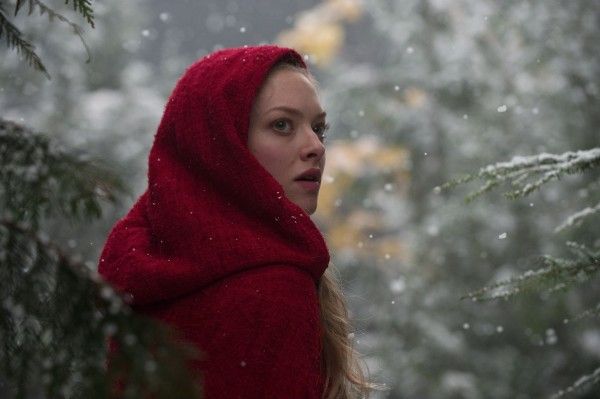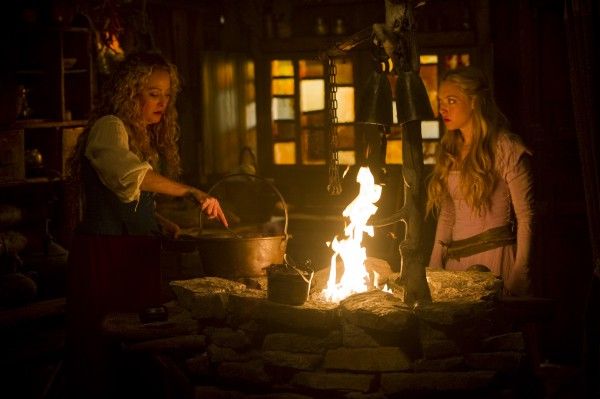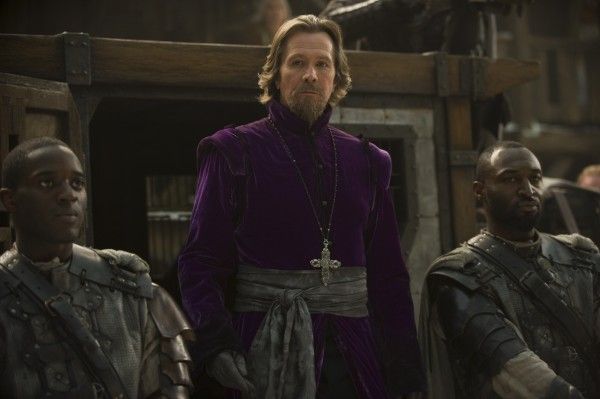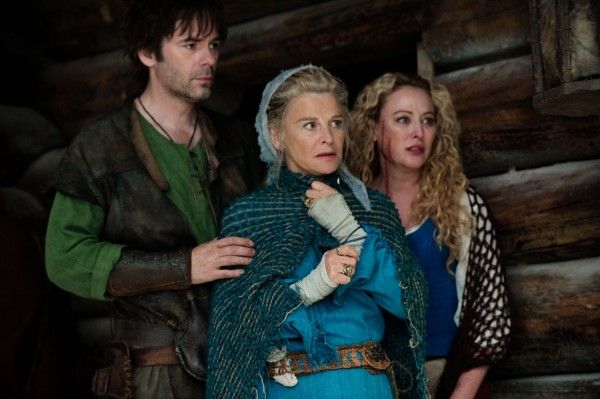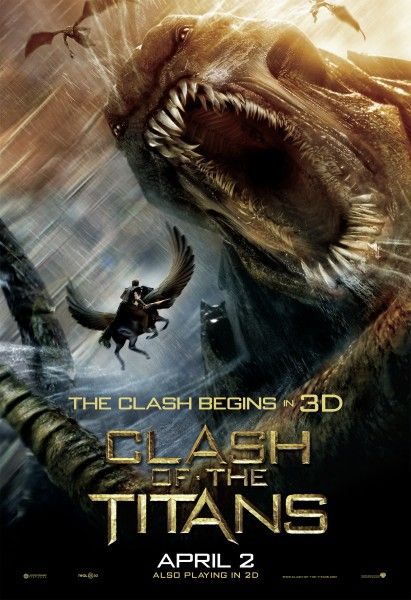After writing the horror thriller Orphan for Appian Way, screenwriter David Johnson and that production company had been looking for another project they could do together. Then, he was approached by them with the idea of adapting the story of Red Riding Hood, which he turned into a mystery thriller and coming of age romance, with the fairy tale woven throughout. After finishing that project, he collaborated with Greg Berlanti and Dan Mazeau to develop the story and write the script for Wrath of the Titans, the sequel to the Greek mythology epic Clash of the Titans.
While at the press day for Red Riding Hood, helmed by Twilight director Catherine Hardwicke and starring Amanda Seyfried in the title role, David Leslie Johnson did this exclusive interview with Collider and talked about developing the well-known fairy tale into a full-length feature film, writing a mystery that creates doubt and paranoia for the audience, collaborating very intensely with Catherine Hardwicke on the script, and getting the chance to see what the sets looked like once the world was brought to life. He also talked about the unusual process of breaking the story for Wrath of the Titans, since they were under such a time crunch with it, using action to illuminate the characters, and getting to work with a blank slate, since there was no sequel to the myth of Perseus. Check out what he had to say after the jump:
Question: How did you get involved with this project? Did they come to you about doing it?
DAVID LESLIE JOHNSON: Yeah. I had worked with the Appian Way production company before with Orphan, a couple years ago. We had a great time on it and were trying to find something else. They came to me with the idea that they wanted to do a Little Red Riding Hood project and basically threw out the idea of adapting the fairy tale. That’s how it came about.
In taking on a story that’s so well known by so many people for generations, were there things that you knew you would have to include and things you knew needed to be cut?
JOHNSON: Yeah, for sure. I wanted to include as much of the fairy tale as possible, for that reason. Everybody knows it and the story’s power comes from its familiarity, so I definitely wanted it to feel like Red Riding Hood. I wanted to keep the fairy tale intact, as much as possible. That’s why it comes at the end and everything else is the events that lead up to the story we know. There were parts of the fairy tale that just could not fit in with the narrative we had. It just couldn’t be done. So, we included the dream sequence towards the end to hit all those beats that people are expecting to see.
When you’re dealing with a story that’s not very long in page count, is it freeing to have so much creative space, or is it daunting because you have to figure out how to fill in the story?
JOHNSON: It’s both, at the same time. It was definitely daunting, at first, because I had the thought of, “How does this become a feature film?” But then, once I sat down with the story and started asking myself, “What don’t we know about Red Riding Hood?,” I realized that you don’t even know her name. If you start fleshing it out, she’s going to grandmother’s house, but she’s obviously coming from somewhere. We know she has a mother. It was just about back-tracking from there. And then, the other aspect that helped flesh it out a little bit was just looking at the themes of the story. The wolf takes the short path, and she takes the other path. It’s all about making choices, and that’s where the love triangle came about. It was illustrating with characters the idea of making a choice. Those guys represent two different paths she could take. Both the theme and the story helped blow out the world a little bit.
Was it important to create a mystery where you could make everyone a suspect and create that constant doubt for the audience?
JOHNSON: Yeah. Basically, I knew from the beginning who I wanted the wolf to be and the rest of the story came about from me trying to figure out how to obfuscate that. We created a world where there are lots of people who could be the wolf. (Director) Catherine [Hardwicke] was very keen on making sure that literally everybody could be a suspect. I had it more narrowed down to the guys, and she wanted to get that paranoia, which was very important to me. In addition to creating red herrings and disguising the mystery, I wanted it to have a feeling of, “I don’t know who my neighbor is. My neighbor has a secret. How well do I know all these people?” And so, Catherine wanted to make all the women suspects too, and I thought that really helped that. When the curtain is pulled back at the end, you want to be surprised. Hopefully, we’ve done that.
What was it like to collaborate with Catherine Hardwicke, once she had signed on as the director?
JOHNSON: She was terrific. She is just so intense and so committed. For two weeks after she came onto the project, I was going over to her house, every day. I would sit across the desk from her and we would go through the script, literally page by page, and get it into the shape she wanted it to be. It was a very intensive couple of weeks, but I would go home and go to sleep and come back the next day, and she had been up all night, drawing the things that we talked about the day before. She has so much energy and she’s so creative. It really energized me.
Did you get to spend any time on the set, so that you could see this world brought to life?
JOHNSON: I went up for the table reading. At that point, they had the sets built, so I got to explore the sets and climb around the buildings. I was busy when they were actually shooting, but I did have the chance to go up and see it. They did an amazing job where you could get on the set and feel like you were in that world. Everything was practical. You could climb the stuff. It was structurally sound. There was no place you couldn’t go. They had everything really well thought out and everything was real.
How did you get involved with writing Wrath of the Titans? What was the process like, to write that from a treatment?
JOHNSON: Our executive from Warner Bros. for Red Riding Hood brought me on to Clash of the Titans 2. That process was just on a very accelerated time table, so what they did was bring in Greg Berlanti to break the story with Dan Mazeau and I, just because we needed to work fast. So, there wasn’t a pre-existing treatment, at the time. We took a couple of weeks and broke the story on that, and it happened very quickly because there were three of us working, all together. Actually, I had never really worked like that before. It was more of a TV way of doing it, and it worked fantastically. We broke the story very quickly and the story we had, having the three minds on it at the same time, as opposed to having one writer after the other, worked really well.
There’s been a lot of talk about the film being more gritty and feeling more realistic, even though it’s a mythological story. Was that something that you wrote into the script?
JOHNSON: When the director, Jonathan Liebesman, came on, he had a very clear vision of what he wanted that world to be like. That’s when we shifted into more of a feeling that this was a world that used to actually be. It’s not Middle Earth. It’s not another planet. It’s Ancient Greece, so it should feel like Ancient Greece, to the extent that that’s reasonable.
They decided to convert the first film into 3D, after the film was finished shooting, but with this one, you knew it would be in 3D ahead of time. Did that affect the writing at all?
JOHNSON: No, it’s more the director who has to have that in mind. When you’re making a 3D movie, you’re directing it completely different than you would a 2D movie. There were some ideas that came up for things that would be good in 3D, but they were little moments. It wasn’t something we were really focused on. We were just focused on story, and Jonathan is all about bringing it to life and visualizing it.
How will the sequel compare to the first film? Did you re-watch the first film to see what worked and what didn’t?
JOHNSON: We looked at the first film, but the whole idea of doing a sequel really was a blank slate because there is no sequel to the myth of Perseus. He became a king and had lots of kids, and that was it. It was good for a reference point for the character because we had to be faithful to the character as he was created there, but what next was just a blank canvas and we were free to play with it a little bit.
How do you approach writing action, and will there be a lot more action in the sequel?
JOHNSON: Action is my first love. When I first started writing, my favorite movies were Raiders of the Lost Ark and Aliens, and that sort of thing. For me, it’s fun. It’s almost not like going to work. It’s playing with toys, really. The fact that it gets to be my job is still blowing me away. It’s a different way of writing. If you’re doing horror or suspense, you’re using fear to tell a story. When you’re doing an action movie, you’re using action to tell a story. It shouldn’t just be action for the sake of action. It should be action to illuminate character, in some way. With the truck chase in Raiders of the Lost Ark, you learn a lot about Indiana Jones from the way he handles the situation. You see humor and determination, and it’s like a little movie, in and of itself. That’s how Dan [Mazeau] and I wanted to approach this, and Dan is actually a little better than I am with it. We wanted every action scene to illuminate the character, in some way, or their relationship with the other characters.
Is there a good balance of character development with the action?
JOHNSON: I hope we balanced it well. In a movie like that, there are beats where we stop and get to know the people, but you want to get to know them on the move, in a movie like that. It’s more trying to learn about them while they’re on the move.
Is it helpful for you, as a writer, to know who you’re writing for with Wrath of the Titans, as opposed to Red Riding Hood, where you had no idea who would be cast?
JOHNSON: I’ve never actually have thought about that, but that was one thing that going back and looking at the first Clash of the Titans was helpful for. Actors have their own voice. When you’re just writing for yourself and you don’t know who it is, you don’t necessarily have a voice in mind. Liam [Neeson], Ralph [Fiennes] and Sam [Worthington] have very distinct voices from the first movie that we were able to riff on and expand on. It has its own challenges because you want to be faithful to that, but when you have actors like that who have great personas, it also makes it a little easier because their voices are so clear in your head.
Once someone gets cast as a character you’ve written, do you go back and adapt that character to the specific actor?
JOHNSON: For sure, yeah. For me, it helps to be able to hear an actor’s voice in my head. The dialogue just comes easier. I know what that person is going to say or how they’re going to sound saying it. It’s a great advantage

